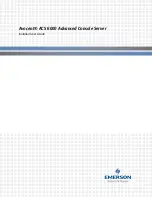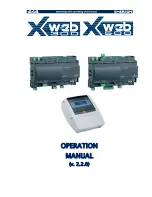
–
User.
Read-only
access
to
all
switch
module
settings.
–
User+.
Read-only
access
to
all
switch
settings,
plus
the
ability
to
restart
the
switch
module.
TFTP
Determine
the
location
of
the
Trivial
File
Transfer
Protocol
(TFTP)
servers
(as
well
as
the
path
and
file
name)
to
be
used
for
the
download
configuration
file,
firmware
code
file,
upload
configuration
file,
and
log
file.
v
TFTP
server
software
must
be
running
for
TFTP
services
to
work.
v
For
the
configuration
file
that
is
uploaded
to
a
TFTP
server
to
be
saved
correctly,
you
must
first
save
switch
module
configurations
to
non-volatile
random
access
memory
(NVRAM).
v
Before
the
switch
can
upload
its
history
log
file
to
the
TFTP
server,
an
empty
history
log
file
must
exist
on
the
TFTP
server.
Virtual
LANs
Virtual
LANs
(VLANs)
allow
multiple
blade
servers
to
be
part
of
a
logical
group
and
prevent
other
servers
that
do
not
belong
to
a
given
group
from
gaining
direct
access
to
the
group
resources
and
data.
The
BladeCenter
Ethernet
switches
can
append
a
4-byte
VLAN
tag
to
incoming
frames
on
a
per-port
basis,
and
use
the
tag
on
certain
frames
to
permit
or
block
access
to
those
frames
at
other
ports.
VLAN
traffic
can
be
restricted
to
a
single
BladeCenter
T
unit
or
can
extend
across
multiple
BladeCenter
T
units.
When
VLANs
are
extended
across
multiple
BladeCenter
T
units,
intermediate
switches
use
the
VLAN
tag
to
block
frames
from
nonmember
destinations.
When
defining
VLANs
that
span
a
chassis,
consider
the
following
points:
v
Blade
server
ports
that
are
in
the
same
VLAN
must
have
the
same
VLAN
ID.
v
Define
the
same
VLAN
ID
on
both
Ethernet
switches
for
blade
servers
that
use
both
switches
to
connect
to
the
same
external
network.
v
Ethernet
switch
ports
used
to
span
multiple
BladeCenter
T
units
must
be
configured
as
Tagged
,
with
a
specific
default
VLAN
ID
for
any
untagged
packets.
v
The
external
ports
and
Link
Aggregation
Groups
(LAGs)
must
be
members
of
all
VLANs
that
span
multiple
BladeCenter
T
units.
v
The
intermediate
network
device
that
interconnects
the
BladeCenter
T
units
must
be
configured
to
handle
tagged
VLAN
packets
for
all
applicable
VLAN
traffic
that
should
be
passed
through
the
device.
The
BladeCenter
T
unit
default
VLAN
ID
is
1
and
includes
all
blade
servers
in
the
chassis.
If
multiple
VLANs
are
required,
additional
VLAN
IDs
must
be
configured.
Review
the
following
example
to
understand
how
VLANs
can
be
configured.
VLAN
example
The
example
shown
in
Figure
44
on
page
81
defines
three
VLANs
within
a
single
BladeCenter
T
unit
and
multiple
VLANs
extended
to
multiple
BladeCenter
T
units.
Table
23
on
page
81
shows
the
defined
VLAN
parameters
that
are
set
to
support
this
configuration.
Outgoing
packets
for
internal
blade
server
ports
must
be
untagged.
80
BladeCenter
T
Types
8720
and
8730:
Planning
and
Installation
Guide
Содержание 87302RU
Страница 1: ...BladeCenter T Types 8720 and 8730 Planning and Installation Guide GA27 4339 02 ...
Страница 2: ......
Страница 3: ...BladeCenter T Types 8720 and 8730 Planning and Installation Guide GA27 4339 02 ...
Страница 6: ...iv BladeCenter T Types 8720 and 8730 Planning and Installation Guide ...
Страница 8: ...vi BladeCenter T Types 8720 and 8730 Planning and Installation Guide ...
Страница 12: ...Index 121 x BladeCenter T Types 8720 and 8730 Planning and Installation Guide ...
Страница 14: ...xii BladeCenter T Types 8720 and 8730 Planning and Installation Guide ...
Страница 102: ...88 BladeCenter T Types 8720 and 8730 Planning and Installation Guide ...
Страница 130: ...116 BladeCenter T Types 8720 and 8730 Planning and Installation Guide ...
Страница 134: ...120 BladeCenter T Types 8720 and 8730 Planning and Installation Guide ...
Страница 138: ...124 BladeCenter T Types 8720 and 8730 Planning and Installation Guide ...
Страница 139: ......
Страница 140: ... Printed in USA GA27 4339 02 ...
















































